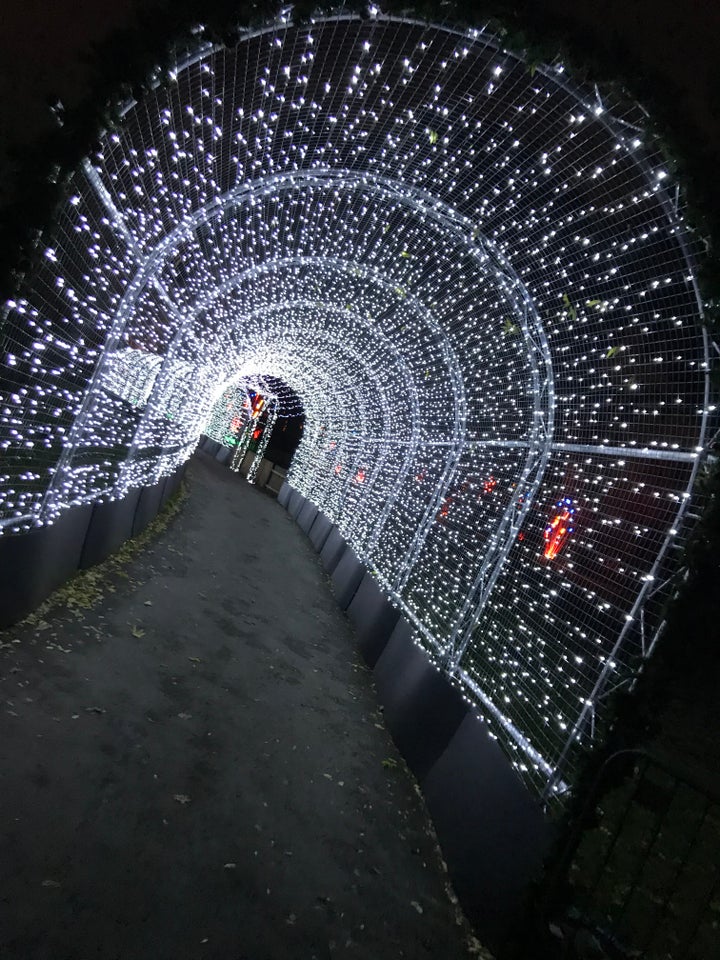
Kew Gardens is one of those places that I don’t visit enough. So much to do and see year round and an easy trip on the overground from home to its very own tube station with built-in pub, every year I promise to visit more often, every year I fail miserably.
Here with the family for one of my favourite annual events, the only one that gets me out walking at night in freezing temperatures for nearly an hour - the Christmas Walk. We wrap up warm and ogle the sights, each year more spectacular than the next.
If you don’t know much about Kew, here’s a potted history;
The royal family used Kew Palace as a summer residence. Originally a nine acre site laid out by King George III’s mother, Augusta, in 1759 William Aiton from Chelsea Physic Garden was brought in to manage the garden which swallowed parts of the park to eventually expand to its current three hundred acres.
In 1772 the Royal estates of Richmond and Kew were merged. William Chambers, the architect behind Somerset House built the Chinese Pagoda. In 1840, Kew Gardens became a national botanical garden, helped by the efforts of the Royal Horticultural Society. It was then that they started to expand to what houses one of the most diverse botanical collections in the world. A living collections of 30,000 plants and an herbarium with over seven million preserved plants and specimens and fungi, you could can see why this UNESCO world heritage site is one of the top tourist attractions in London. On a slightly grander scale Kew became essential to the expanding empire, supplying seeds, crops and workers to give advice to the colonies. Seventy thousand seeds from Amazonian rubber trees were cultivated and send to Malaysia and Sri Lanka in 1876 which became the start of the entire world rubber industry.
Up until the Second World War Kew saw significant expansion of its scientific collection which waned due to lack of funding and personnel conscripted to war, however from 1965 onwards it was onwards and upwards with the lease and management of Wakehurst Palace in Sussex, Kew’s sister country estate. Wakehurst is home to Kew’s Millennium Seed Bank with a collection of 10% of the worlds flowering plants ( 30,000 species) with the aim to hold 25% by 2020.
Modern Kew takes a leading role in world conservation of biodiversity and habitat. In 2000 it joined with botanic gardens globally to sign the Gran Canaria Declaration, with a global conservation strategy adopted in 2002. This is by no means just a garden. It is The Garden.
Now my fingers aren’t the greenest of the green, although I did mow our lawn and weed two massive flower beds this summer. You can see the extent of my experience by the fact that I’m boasting about so little!
The gardens may be 250 years old but they appeal to all ages for a multitude of different reasons. From the Treetop Walk ( I’ve never done it but desperately want to) to the daytime winter events creating winter flowers in the Princess of Wales Conservatory, Kew has it all.
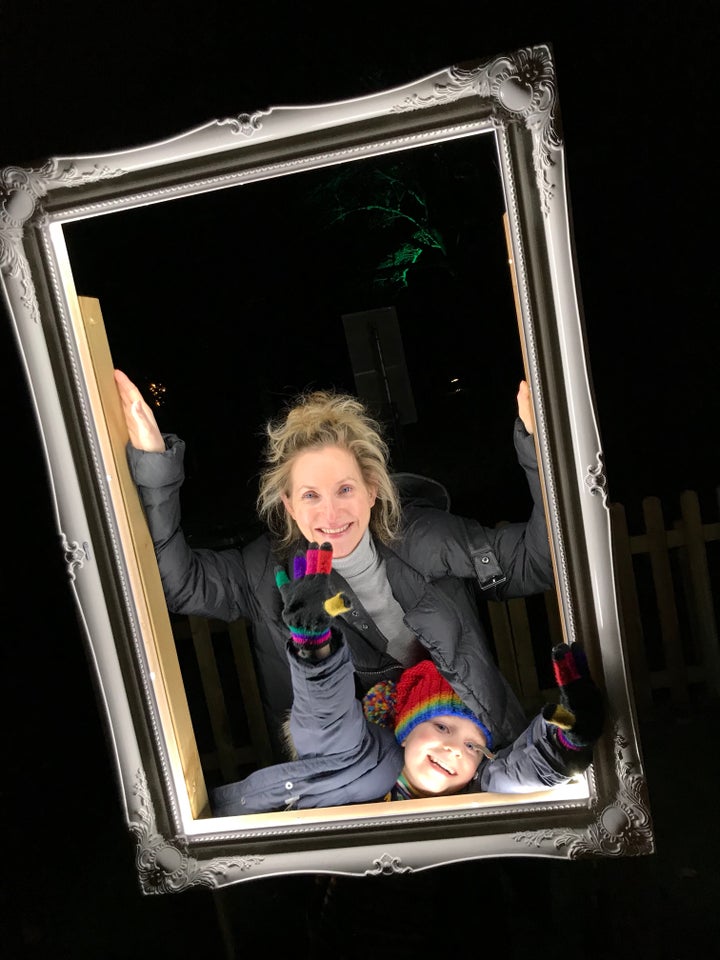
It’s the fifth year for Christmas at Kew and this year promises to be the biggest ever. If you think these botanical gardens are beautiful in the daytime, exploring the trail in the dark, lit up by a sea of never-ending lights of every shape and size is simply breathtaking. Over a million in total, making up art installations by well-known artists.
So, homework rushed, baths had, supper eaten and we are off. Hats, gloves and a crisp clear night remind me how nice it can be to be out on a winter’s evening. Mince pies and mulled one upon arrival - our first of the season - and we are off.
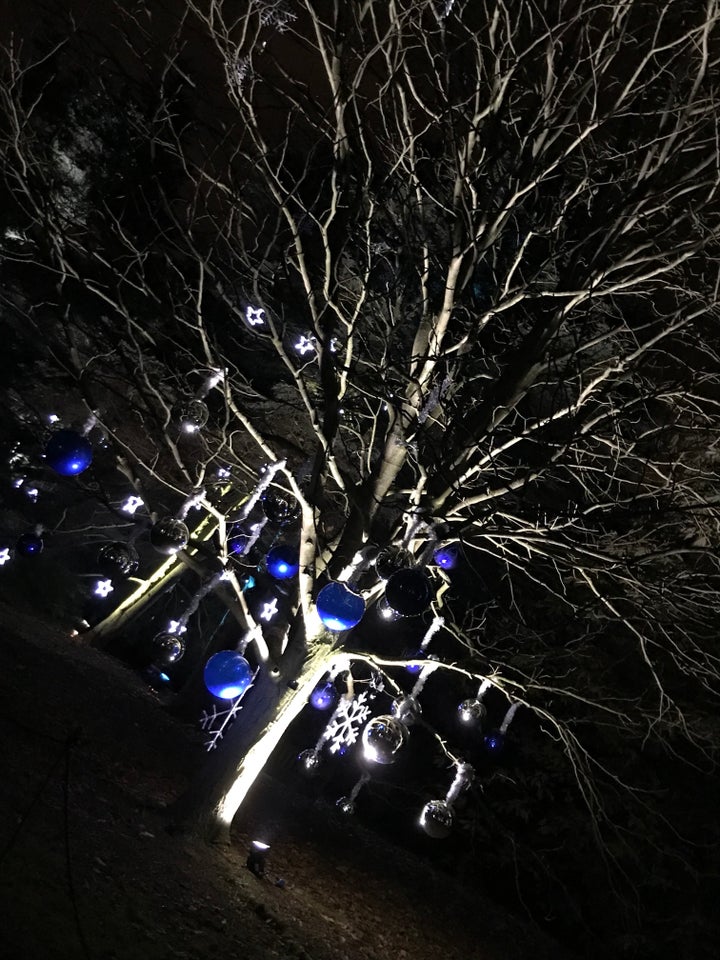
The children almost can't believe their eyes - through the welcome archway made up of 4000 baubles we are greeted by a sea of rainbow-coloured globes of light that dance in time to Carol of the Bells, changing pattern and colour before our eyes. The Sledge Tree next, another fantastic construction; eleven metres of sledges calling for snow. Created by Hellowood and Crestmosphere the installation highlights the effect of global warming, something that my six year old was thrilled about, having just covered the topic in school.
On we walked through the huge trees illuminated in amazing colours until we reached the Singing Trees by Ithaca. It was almost impossible to contain my two year year old, out of the push-chair and desperate to touch the lights wrapped around each tree as they dazzled and changed colour to the Christmas tunes that they were singing.
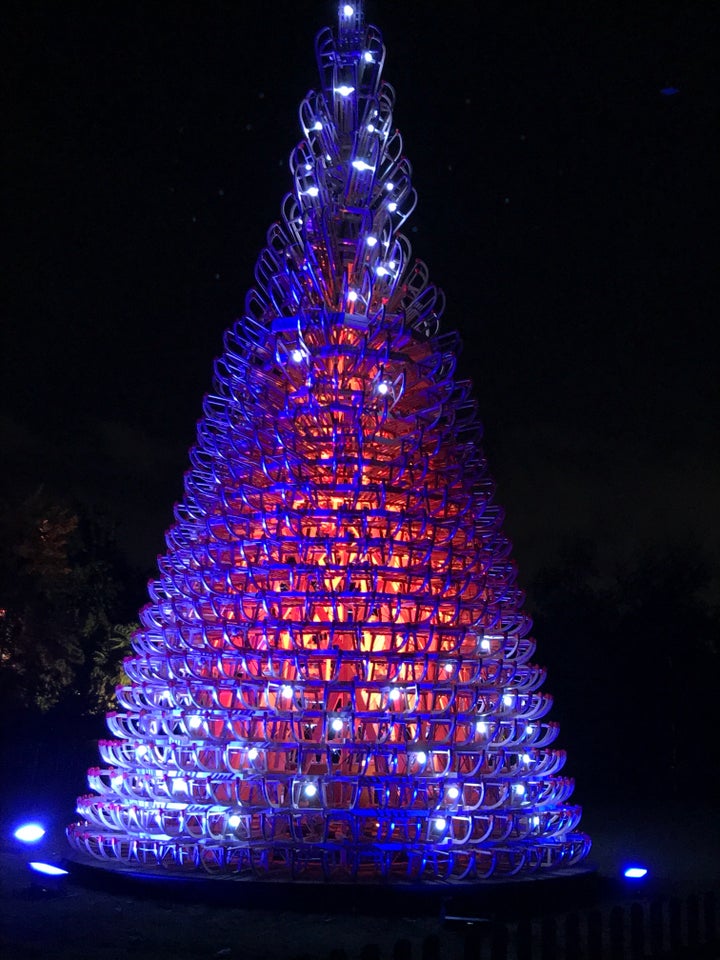
Other favourites included More Bubbles by BAT Studios; an ultraviolet walkway of bubbles and the singing illuminated animated bridge, DUET, also by Ithaca.
Using over a million lights and thirty-seven kilometres of lighting and cable, it's simply awe inspiring.
The trail lasts a good forty five minutes with Father Christmas also making an appearance. Stops for prosecco and family photos using brightly-lit frames frames along the way, the experience is magical. There's good and drink in abundance at different stalls, from suckling pig to roasting marshmallows on an open fire. Lastly, leave time for the Victorian fairground before the dazzling finale.
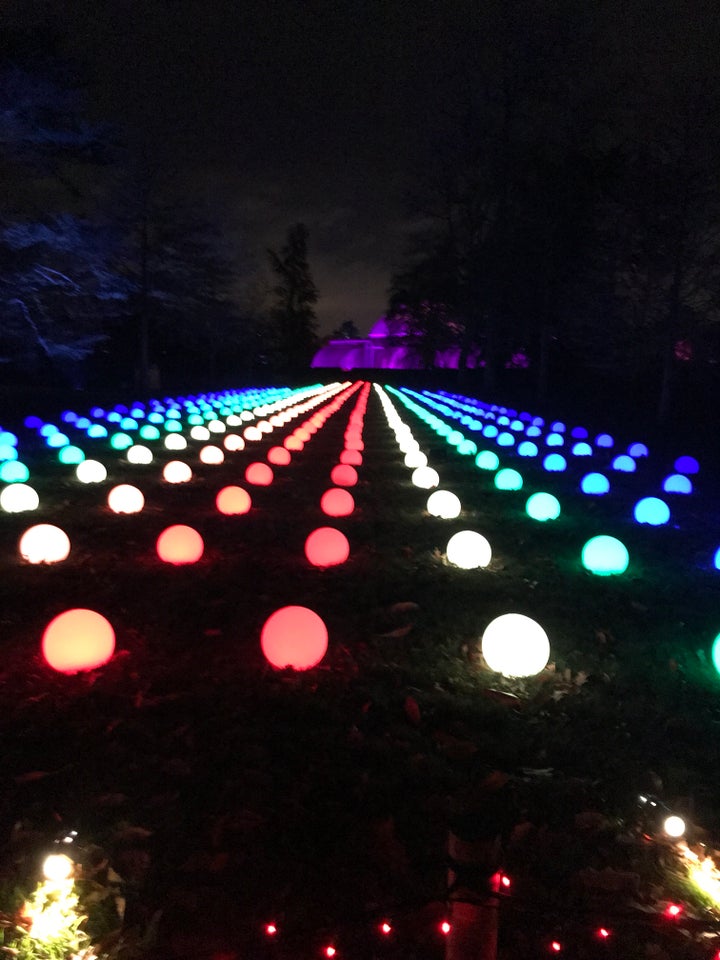
This year sees a little bit more commerciality brought into the project which to my mind only makes the offering better. It's not a bad thing given Kew's charitable status, nor was it a necessity; this sells out quickly. It just makes for an even more magical, family night out. It's an annual must.